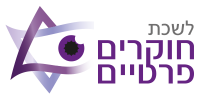Polygraph Testing as a Tool for Employee Screening
Recently, there has been a growing awareness of the need for reliability testing, both as part of the recruitment and hiring process for new employees and as part of the organized workflow within a business.
One of the most common tools for this purpose is the polygraph examination. In the following article, I will review the topic of polygraph tests for employee screening and the added value they provide.
The recruitment of personnel, as well as the termination of employment, depends on the employer’s decision. In order to make an informed and prudent decision, the employer relies on various tools that provide the necessary information, such as screening tests conducted by specialized companies, graphologist evaluations, achievement tests, intelligence assessments, psychotechnical tests, professional examinations, and more. Recently, due to the growing awareness of the importance of reliability in the employee evaluation process, we are witnessing an increasing number of employers utilizing polygraph examinations for this purpose.
These examinations are conducted both during the recruitment process for new employees and during the evaluation process for employee promotion within the organization. Traditional methods used by employers to make decisions regarding the hiring and promotion of employees have so far relied on conducting interviews, reviewing résumés, and checking references. While these methods are effective for honest and normative employees, they are insufficient for detecting a candidate's level of integrity and reliability, especially when the candidate seeks to deceive the prospective employer.
In many cases, a candidate with a problematic background may falsify a résumé, lie during a personal interview, and even arrange false references. A job candidate may also conceal critical information of interest to the employer, such as the true reasons for the termination of previous employment, the existence of criminal records opened against them, disciplinary issues, or any other problem that could negatively impact their acceptance into the new workplace.
Although a polygraph examination for a job candidate does not guarantee that the individual will not breach the trust of their employer or commit offenses in the workplace in the future, studies in the fields of psychology and criminology indicate that there is no better method for predicting a person's future behavior than by examining their past behavior.
The tightening of privacy protection laws in recent years, together with the Criminal Records and Rehabilitation of Offenders Act (Section 22), prevents employers from legally accessing a candidate’s police criminal record. This has significantly increased the need for reliability and integrity screening tools, particularly the use of polygraph examinations.
Another phenomenon we have witnessed in recent years is "industrial espionage," carried out by inserting "Trojan horses" into the workforce. It is difficult to detect such employees without the use of specialized and appropriate tools, such as polygraph examinations.
In light of these challenges, it is no surprise that in recent years the labor market has significantly expanded the use of polygraph examinations during the pre-employment stage. There are many workplaces, both in the private and public sectors, where participation in a polygraph examination is a condition for employment.
As with any polygraph examination, polygraph testing for employees and job candidates is divided into three main stages: the pre-test interview (PRETEST), the examination stage itself (TEST), and the scoring and decision-making stage conducted by the examiner.
Pre-Test Interview Stage (PRETEST):
At the beginning of the examination, and before connecting the examinee to the polygraph device, a meeting and interview are held between the examiner and the examinee. In this meeting, the examiner seeks to gather as much information as possible about the examinee, including their background and characteristics. The pre-test interview includes several key components that essentially cover the process of preparing the examinee for the examination.
- Collecting information about the examinee’s background and having them complete a detailed questionnaire (the topics will be detailed later).
- Providing the examinee with an explanation about the polygraph device, its operation, and the physiological component.
- Reading the examination questions accurately to the examinee.
- Explaining to the examinee the importance of full cooperation with the examiner.
- Presenting and explaining research validity regarding the reliability and accuracy of the polygraph examination.
At this stage of the pre-test interview, the examiner must also identify and isolate emotional or physiological factors in the examinee that could affect the test results. In employment-related polygraph examinations, it is customary to provide each examinee with a detailed questionnaire to complete prior to the test. The questionnaire includes questions regarding personal details, family members and their occupations, education, military service and any offenses or trials during service, previous workplaces in chronological order including positions held and reasons for leaving, health status including illnesses or medications, information about civil lawsuits, police investigations whether as a witness or a suspect, past criminal offenses, involvement with drugs, gambling, financial debts, connections with competing companies, and so forth.
During the interview conducted by the polygraph examiner regarding the information recorded in the questionnaire, critical information often emerges — information that, without the polygraph examination, the potential employer would not have otherwise uncovered. This information can shed light on problematic issues.
After the examinee completes the questionnaire, they undergo an interview conducted by the examiner, with specific attention given to each item filled out. At the end of the interview, the relevant questions to be asked during the examination are read aloud to the examinee, who then signs a declaration expressing their consent to undergo the test.
Common Relevant Questions in a Polygraph Examination for Employee Screening:
- Have you committed a serious criminal offense?
- Do you use drugs?
- Have you been investigated by the police as a suspect in a criminal offense?
- Have you conspired with a supplier or customer to defraud a company where you worked?
- Have you been dismissed from a workplace due to suspicion of fraud or theft?
- Have you stolen anything of value from a previous workplace?
- Were you sent to work at (company name) by a criminal entity or a competitor?
Examination Stage (TEST):
During the examination, some examiners conduct this immediately after connecting the examinee to the polygraph device, while others do so after the first "chart" (the first set of questions). The examinee undergoes a stimulation test called a "STIM," whose main purpose is to demonstrate that the polygraph can distinguish between truthful and deceptive answers, thereby gaining the examinee’s trust in the device and the examiner. After completing the stimulation test, several series of questions are conducted, during which the examinee is asked the questions listed above along with additional types of questions. The examiner repeats the series of questions several times while simultaneously analyzing the examinee’s responses as reflected in the polygraph charts.
The examinee’s responses are analyzed as reflected in the polygraph charts. If concern or heightened reactions are detected in response to one or more of the relevant questions, the examiner proceeds to conduct a specific examination focused on those questions using the Control Question Test (CQT) method. The examiner asks the examinee the previously highlighted questions along with additional questions related to the problematic issue, with the aim of confirming or refuting the possibility of deception or concealment of information on that matter.
Scoring and Decision-Making Stage:
The examinee’s responses are analyzed as reflected in the polygraph charts. If concern or heightened reactions are detected in response to one or more of the relevant questions, the examiner proceeds to conduct a specific examination focused on those questions using the Control Question Test (CQT) method. The examiner asks the examinee the previously highlighted questions along with additional questions related to the problematic issue, with the aim of confirming or refuting the possibility of deception or concealment of information on that matter.


